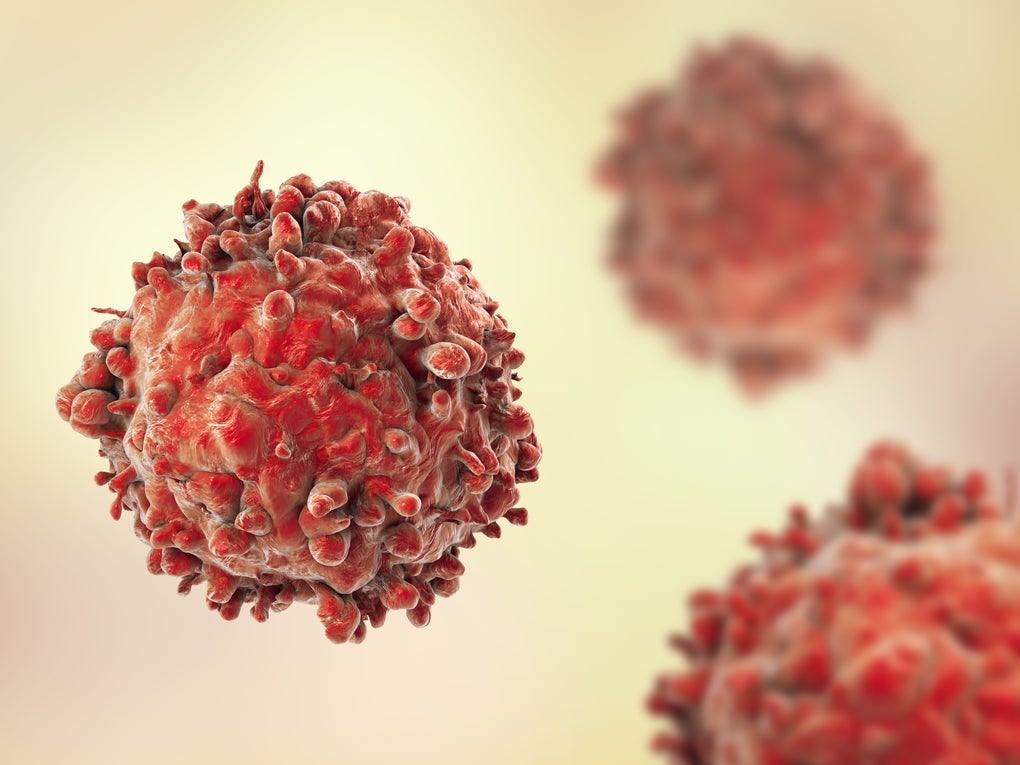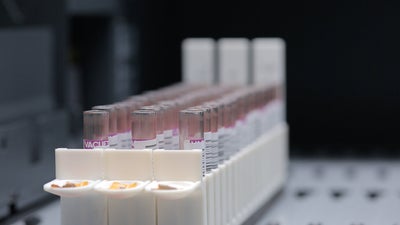
Types of blood cancer
Overview
Blood cancers, also known as hematologic cancers, develop when a type of blood cell becomes cancerous. These diseases disrupt the normal functions of blood by affecting its parts. The three main types of blood cancers are leukaemia, lymphomas, and myeloma. Leukaemias and lymphomas affect white blood cells, while myeloma affects plasma cells.
There are also conditions called myelodysplastic syndrome and myeloproliferative disorders. These used to be seen as blood disorders, but now ongoing research has found that they can be early forms of cancer, or lead to cancer due to the unusual growth of blood cells.
Learn more: What is blood cancer
Leukaemia
Leukaemia is a type of cancer that begins in the bone marrow, leading to the rapid production of abnormal white blood cells. These cells can interfere with the body's ability to function normally, affecting the immune system and overall health. In the UK, there are approximately 9,900 new cases each year, making it the 12th most common cancer. Despite its frequent association with children, leukaemia is more prevalent in older adults, particularly those over 75, and tends to affect men slightly more than women.
The two main categories of leukaemia are chronic and acute, with chronic lymphocytic leukaemia (CLL) and acute myeloid leukaemia (AML) being the most common types. Acute lymphoblastic leukaemia (ALL), while rare overall, is the most common type in children under five.
Learn more: Leukaemia
Lymphomas
Lymphomas are cancers that develop from lymphocytes, a type of white blood cell produced in the bone marrow but often accumulating in the spleen and lymph glands. Known as lymphatic system cancer or lymph node cancer, lymphomas come in two main types: non-Hodgkin lymphoma (NHL) and Hodgkin lymphoma.
In the UK, around 16,200 new cases of lymphoma are diagnosed each year, with approximately 14,100 of these being NHL. NHL primarily affects older individuals, particularly those aged over 55, and over a third of these cases are in people aged 75 and above. However, Hodgkin lymphoma can occur at any age, and is particularly common in young adults in their early twenties and in older people. For women, it is most frequently seen between the ages of 20 and 24, whereas for men, it tends to be most common in those over 75.
Learn more: Lymphoma
Myeloma
Myeloma, also known as multiple myeloma, is a cancer that develops from plasma cells in the bone marrow. In the UK, around 6,000 new cases are diagnosed each year, making it the 19th most common cancer. This type of cancer primarily affects older people, with over 40% of cases occurring in people aged 75 and above.
Survival rates for myeloma have improved over the years. Generally, about 85% of patients survive for at least one year post-diagnosis, approximately 55% survive for five years, and around 30% live for ten years or more. These figures reflect advancements in treatment and diagnosis.
Learn more: Myeloma
Myelodysplastic syndrome and myeloproliferative disorders
Myelodysplastic syndromes (MDS) and myeloproliferative disorders (MPD) are types of blood cancers that affect how the bone marrow works. MDS leads to the bone marrow making weak and faulty blood cells, which can cause anaemia and increase the risk of turning into a more severe form of cancer called acute myeloid leukaemia (AML). The treatment depends on the type and severity of MDS and is guided by tools like the International Prognostic Scoring System (IPSS-R).
MPD causes the bone marrow to produce too many blood cells, which can lead to diseases like polycythaemia Vera and myelofibrosis. The main goal of treatment here is to control the overproduction of cells and manage symptoms to improve quality of life. The course of these disorders varies, but many people can manage their condition effectively for a long time.
Learn more: Myelodysplastic syndrome and myeloproliferative disorders.
A blood cancer or a blood disorder diagnosis can feel overwhelming, but you're not alone. Partnering with DKMS can help you share your story and amplify our combined efforts to expand the stem cell registry, so do reach out to us. Together, we can create more hope and opportunities for people living with blood cancer.
References
1. Blood Cancer. Cleveland Clinic. Accessed July 2024
2. Acute lymphocytic leukaemia. Definition. BMJ Best Practice. Last updated November 2018.
3. Chronic lymphocytic leukaemia. Summary. BMJ Best Practice. Last updated May 2024.
4. Non-Hodgkin's lymphoma. Summary. BMJ Best Practice. Last reviewed May 2024.
5. Hodgkin's lymphoma. Summary. BMJ Best Practice. Last reviewed Jan 2024.
6. Multiple myeloma. Summary. BMJ Best Practice. Last reviewed Oct 2023.
7. Chronic myeloid leukaemia (CML) incidence statistics. CML incidence by age. Cancer Research UK. Last reviewed July 2024.
8. Chronic lymphocytic leukaemia statistics. Incidence. Cancer Research UK. Accessed May 2024.
9. Acute myeloid leukaemia statistics. Incidence. Cancer Research UK. Accessed May 2024.
10. Myeloma statistics. Myeloma incidence. Cancer Research UK. Accessed March 2024.
11. Myeloma incidence statistics. Myeloma incidence by age. Cancer Research UK. Last reviewed June 2024.


